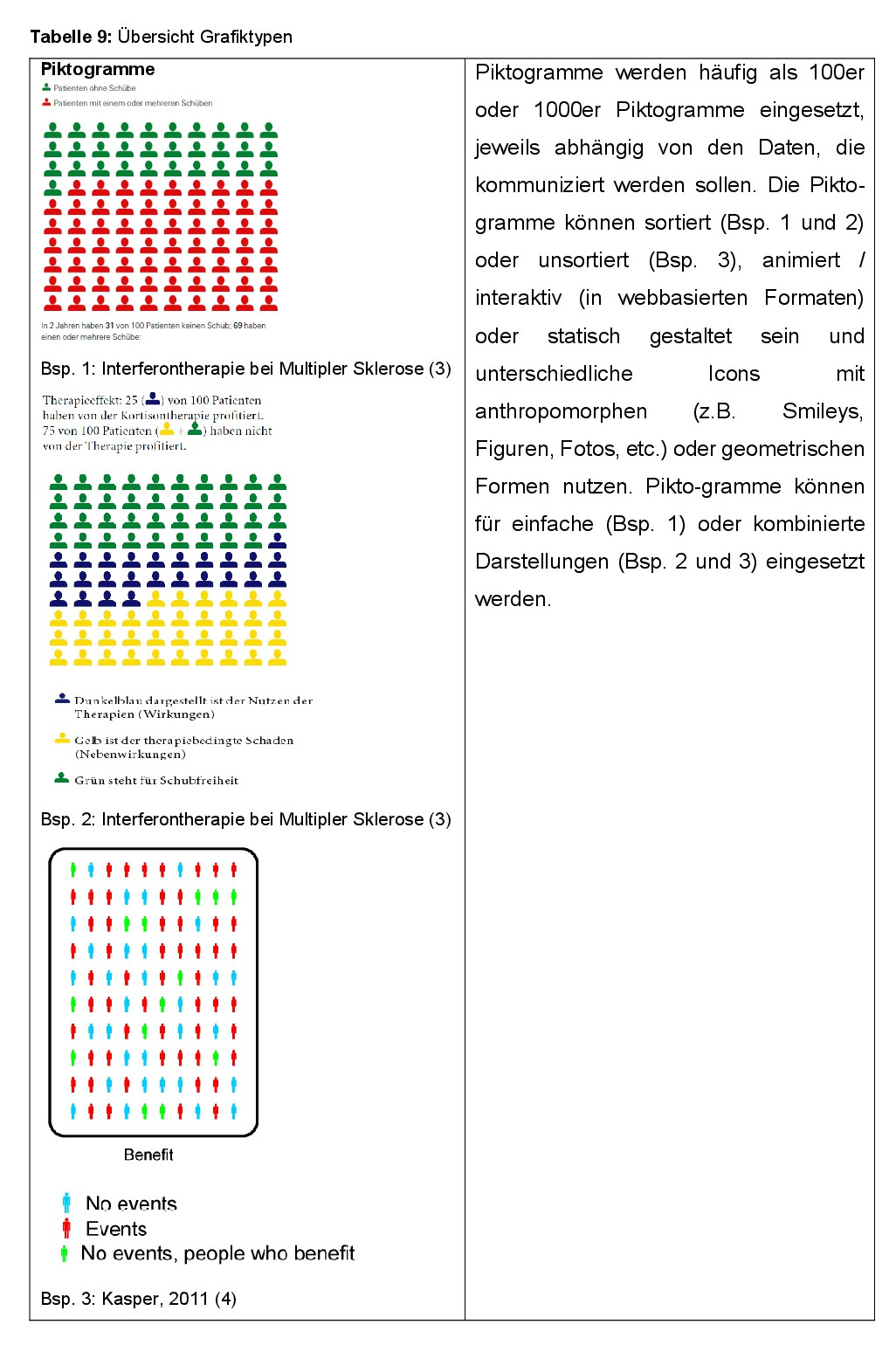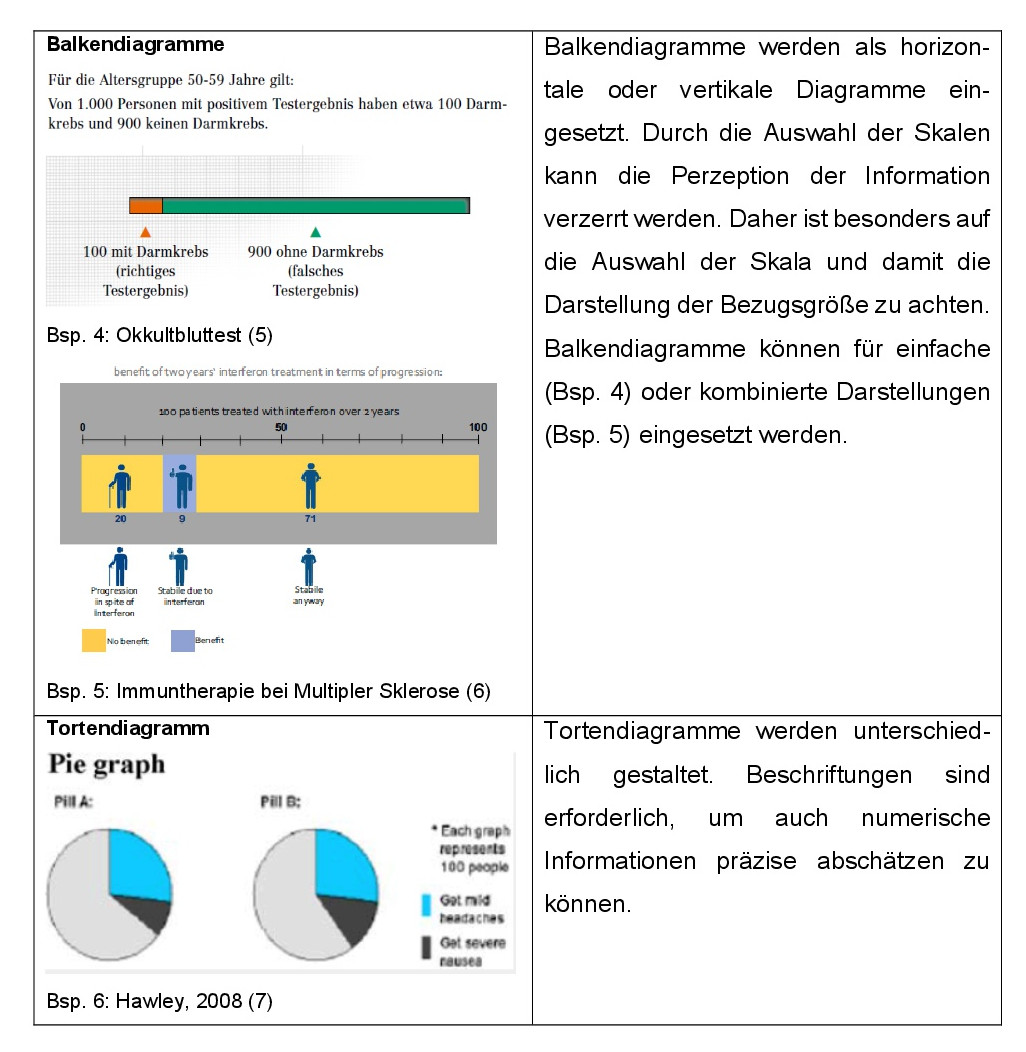Hintergrund
Werden Daten mit einer quantitativen Aussage visuell unterfüttert, können sie dem Betrachter das Verständnis der Inhalte erleichtern. Eine Möglichkeit dazu sind graphische Abbildungen. Sie sind eine sinnvolle Ergänzung zu numerischen Darstellungen. Grafiken sollten jedoch in einer leicht verständlichen Form präsentiert werden (1, 2). Die realistische Einschätzung von Risiken, Nutzen und Schaden präventiver, diagnostischer und therapeutischer Maßnahmen soll ermöglicht werden. Ausführlich gestaltete Grafiken mit einer vollständigen Legende und einer angemessenen Skalenbeschriftung können das schnellere Erfassen einer Aussage ermöglichen (1). Dennoch werden Grafiken nicht immer, wie vom Übermittler der Information erwartet, richtig interpretiert (1). Mehrere Wissenschaftsbereiche forschen, in wieweit die Art der Grafiken zu einem besseren Verständnis von Aussagen beitragen. So im Bereich der Psychologie, der Medizin, der Gesundheitswissenschaften und der Marktforschung. Es werden verschiedene Typen von Grafiken verwendet. Im Bereich der Gesundheitsinformationen werden insbesondere Piktogramme, Balkendiagramme und Tortendiagramme genutzt (vgl. Tabelle 9). So können beispielsweise die Piktogramme sehr variantenreich in einfachen, kombinierten, animierten oder auch interaktiven Darstellungen zum Einsatz kommen. Diagramme werden überwiegend als Balken- oder Tortendiagramme dargestellt. Welche Effekte solche visuellen Ergänzungen in den Textaussagen auf die Leser haben, zeigen die nachfolgenden Erläuterungen.


